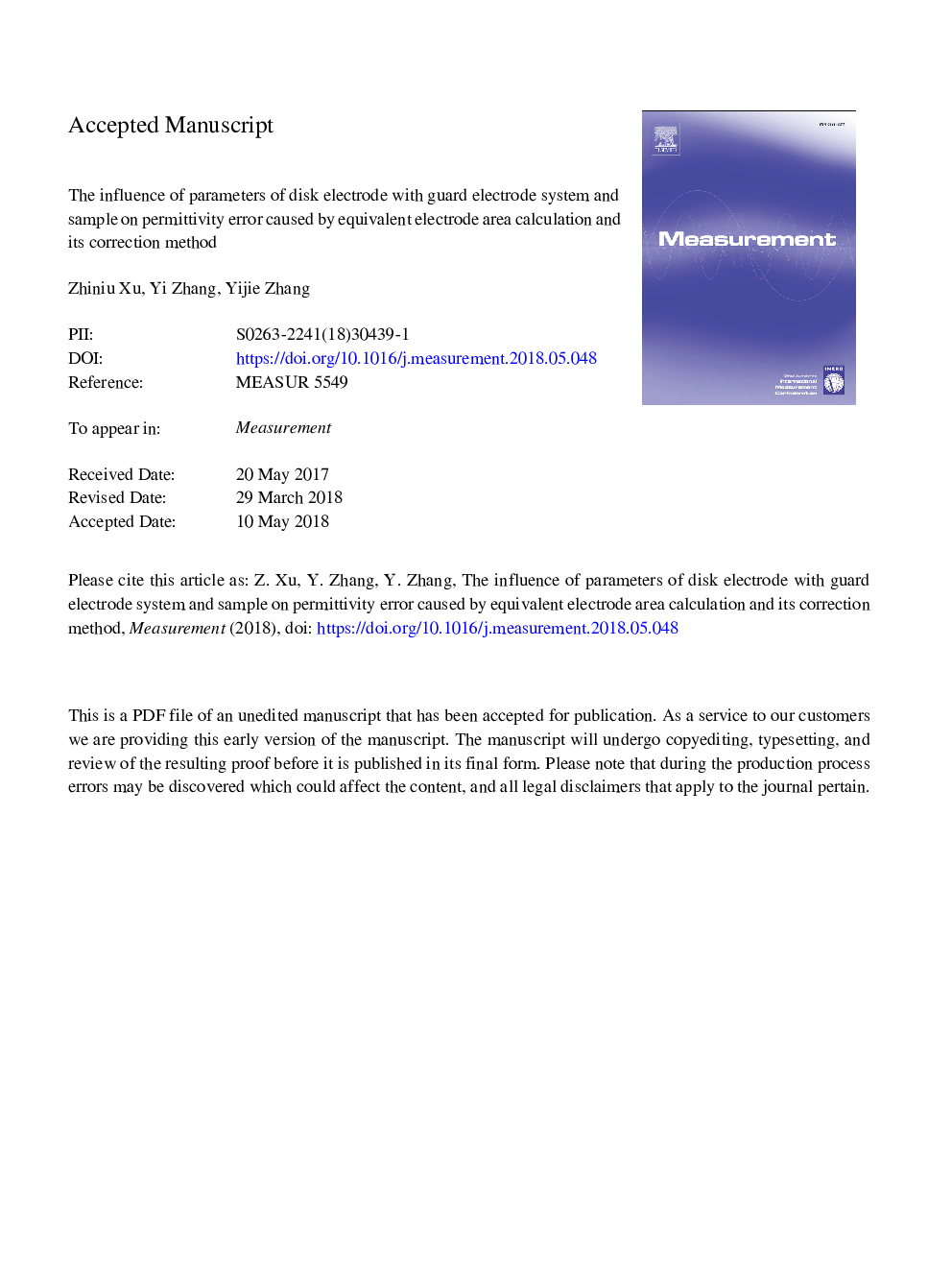| Article ID | Journal | Published Year | Pages | File Type |
|---|---|---|---|---|
| 7119935 | Measurement | 2018 | 26 Pages |
Abstract
To improve the accuracy in the permittivity measurement using disk electrode with guard electrode, a 3D model of this type of electrode is built in Comsol software and validated. The influence of parameters of sample and disk electrode with guard electrode system on the permittivity error caused by equivalent electrode area calculation is systematically investigated. The results reveal that the permittivity errors by means of the equivalent electrode area presented by the IEC 60250 standard are nearly always negative. From a global perspective, the area of the guarded electrode is closer to the accurate equivalent electrode area than the area provided by the IEC 60250 standard. The error decreases with increasing sample thickness and increases with increasing sample permittivity, gap width, radius of the electrode corner. If the sample is thick and the permittivity is low, the error increases significantly with increasing guarded electrode potential. The sample radius has nothing to do with the accuracy if it is slightly larger than the inside radius of the guard electrode. In the normal range, the size of shielding box, the electrode location, the deviation between the guarded electrode and the whole electrode center, the deviation between the guard electrode and the unguarded electrode, and the potential of the bolt have little effect on the accuracy. Based on the model, a permittivity correction method based on interpolation is proposed. First, the models with different parameters of electrode system and sample, measured and real values of permittivity are built. Second, the relationship among parameters of electrode system and sample is obtained. Finally, the measured permittivity can be corrected by using the relationship and the interpolation method. The accuracy in the permittivity measurement is greatly improved. Because of taking potential of guarded electrode and radius of the electrode corner into account, the error introduced by the proposed method is less than that of the existing correction methods in some situations.
Keywords
Related Topics
Physical Sciences and Engineering
Engineering
Control and Systems Engineering
Authors
Zhiniu Xu, Yi Zhang, Yijie Zhang,
